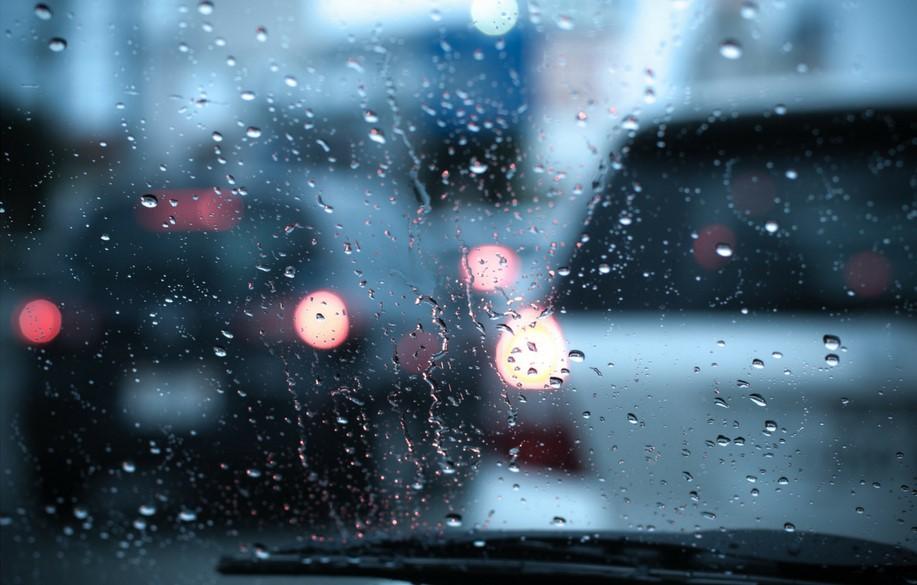How To Improve Driver Performance In Florida’s Awful Weather

Florida’s pretty great when it’s all nice and sunny. But when you’re driving through the pouring rain and sleet is coming down thick and fast, it’s hard to remember you’re still in sunny Florida. It’s even harder to see the road.
We all like to think of ourselves as competent drivers. But if you’re honest, you’ll agree that bad weather affects even the best of us. And, unfortunately, if the conditions are bad enough, events can escalate fast.
Bad weather is considered one of the leading causes of road accidents, and for good reason too. Even the slightest bit of rain can turn ordinarily safe roads into nightmares. According to National Highway Traffic Safety Administration data, more than 22% of total vehicle crashes each year is caused by bad weather.
Rain accounts for the large percentage of weather-related crashes, with up to 73% occurring because of wet pavements and 46% due to heavy downpour. 17% occur during snow or sleet, 14% from snow or slushy pavement and a further 13% due to icy pavement.
The takeaway? Bad weather is rarely good for driving and if you’re caught out in a howler of a storm, that’s one time you need to be very careful.
What bad weather does to your driving
Driving in bad weather can pose quite a hazard to you, your property and others driving around you. The conditions can make it very difficult to maintain minimal control of your vehicle and increase the likelihood of accidents.
If you’re caught out in bad weather, a lot of factors can make things very difficult for you. These factors include the following:
Visibility
If you’re driving and you can’t see where you’re going, it’s highly likely you’re going to have a problem. Really. One of the things that bad weather affects pretty early is your vision. It interferes with how well you can see and leaves you driving on a hunch.
Even worse than reducing visibility, driving in bad weather means you’d find it very difficult to tell what’s happening around you. This can be pretty bad because you don’t just need vision to tell what’s coming in front of you, it’s also necessary to tell what’s going on behind and around you.
Reflection off snow or precipitation can cause dangerous glare that blinds drivers. Heavy rain can dull both vision and hearing so you can’t tell the next car from a tree and sleet clogged windshields can terrible hamper your vision.
Reaction time
The problem with reduced visibility is it really messes with your ability to properly react to events around you. If a truck was bearing down on you at full speed in the sleet, you wouldn’t be able to tell it any different from a lost bird hurtling towards your windscreen.
Generally, if you’re sitting in a laboratory ride, waiting to test your ability to react properly to driving incidents, human reaction time is ¾ of a second, on average. However, when you’re driving in 20 mph wind-driven rain, reaction time can be much slower, as long as 4.5 seconds, especially due to low visibility and poor braking conditions.
For context, if your reaction time was ¾ of a second, it would take you about 132 feet to bring your vehicle to a total stop. In visibility hampered weather conditions, your reaction time of 4.5 seconds means you’ll only be able to bring your vehicle to a stop after 270 feet. Almost the length of a football field. That’s more than enough distance to plow right into whatever it is you were avoiding.
And it only gets worse with the weather conditions. Snowy conditions can even increase your reaction time to as much as 10 seconds and stopping distance to, wait for it… 533 feet. The length of two football fields.
Hydroplaning
When your vehicle races through a puddle of water, if it’s deep enough, it’ll cause your car tires to leave the ground momentarily. When this happens, your car is hydroplaning. If the conditions are bad enough, it can cause you to lose control of your vehicle or render your vehicle immobile.
But the thing with hydroplaning is the puddle doesn’t even have to be that deep. Your car can hydroplane in only a few inches of water too if you stamp on the brakes too hard or race through the puddle too fast.
These factors and more make it extremely hazardous for you to be caught out in bad weather. But the unfortunate thing with weather is it can be unpredictable. So you don’t know when you’re going to get caught out or how bad it’s going to be.
Some tips to help you drive safer
Since you can’t stay indoors forever or always wait bad weather out, there are some tips you can apply to help you drive safer when there’s no other option.
The first sign of bad weather
That’s when you need to slow down and start driving more carefully. This is because the first few raindrops or snow drift on the road are the most dangerous. They mix in with the dust and oil on the road and make them terribly slippery. So this is when you’re losing the most traction and are most at risk of losing control of your vehicle.
If you need to check your wipers, tires or any other parts of your vehicle, now’s the time to do it. Putting it off till later can end in regret. So instead of trying to beat the weather, do what you need to get through it.
And if it looks like it might be a howler, you’d be best served by finding yourself a good spot and hunkering down to wait it out.
The 3-second rule
When conditions are good and driving is easy, the 3-second rule helps you ensure you’re not following the vehicle ahead of you too closely.
The rule simply involves picking a landmark ahead, like a tree, then counting three seconds from when the car ahead of you just passes the it. If you get to the tree before reaching the count of three, then you’re too close.
In adverse weather, you need more than three seconds to be sure you don’t end up rear ending the next vehicle.
Give yourself allowance for poor visibility, slower reaction times and poor braking conditions. 6 -7 seconds is a good start to assure yourself that you’re following at a reasonably safe distance.
The penny test
Bald tires are one of the frequent causes of road accidents. In a study by the National Center for Statistics and Analysis, it was found that 26.2% of the crashes studied involved vehicles that had bald tires. This shows that driving in bad weather with bald tires is an invitation to accidents.
You can ensure that your tires grooves are sufficiently deep by using the penny test. To use the test, all you need do is take a penny and stick it, Lincoln head first, in any of your tire grooves. If you can see the top of Lincoln’s head, then your tires are balding and you need to change them.
Don’t ignore the little things
Your windshield wipers don’t seem like much until you’re stuck in the pouring rain and can’t see past your nose. Don’t wait for the rains before you keep them in good shape. The Florida sun can erode them pretty fast. So even if you wash them often, they can still go quick. Make it a point of duty to change them often.
Apart from your hardware, you also need to look to your car handling skills. Don’t drive too fast when you’re in bad weather. It doesn’t matter if it’s fog, smoke, dust, high winds, sleet, rain or snow, when you’re in it, you’re best served by taking things slow.
But not too slow though, so you don’t cause a pile up from being rear-ended. Don’t take quick turns, race through puddles or stamp on your brakes too hard. Drive as carefully as you can live to drive some more.

Mr. Fine was born in New York, New York, and was raised in the northeast, where he studied sociology at Colby College in Waterville, Maine. He then graduated with honors from the University of Florida Levin College of Law in 1976. In law school, he was a member of Phi Kappa Phi Honor Society, was inducted into the Order of the Coif, and graduated in the top 10 percent of his class. Mr. Fine was admitted into the Florida Bar in 1976, the United States District Court for the Middle District of Florida in 1977, the United States District Court for the Northern District of Florida in 1991, and the United States Court of Appeals 11th Circuit in 1982.
